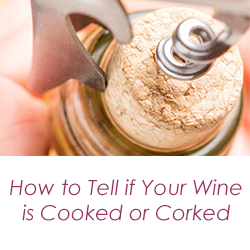A Guide to Decanting Wine
– Open Bottle. Pour In Big Glass Thingy. Then Pour In Little Glass Thingy.
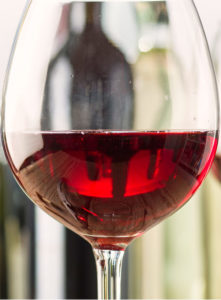 So, you just got home from the grocery store with a nice bottle of Cabernet Sauvignon. You are ready to drink it after a long day at work. You are so excited you post a picture of you sitting on your couch holding the bottle on Instagram. Within seconds, the comments start flowing “Oh, make sure you Decant that one!” De what? “Yeah, you have to open the bottle and pour it into a decanter before you drink it!” What? Why? Are you sure? Somebody help me! Do I have a decanter? Will this big beer mug work? Should I make Sushi? Now I’m in a panic!
So, you just got home from the grocery store with a nice bottle of Cabernet Sauvignon. You are ready to drink it after a long day at work. You are so excited you post a picture of you sitting on your couch holding the bottle on Instagram. Within seconds, the comments start flowing “Oh, make sure you Decant that one!” De what? “Yeah, you have to open the bottle and pour it into a decanter before you drink it!” What? Why? Are you sure? Somebody help me! Do I have a decanter? Will this big beer mug work? Should I make Sushi? Now I’m in a panic!
Knowing when to decant a wine can be tricky. In many cases it can vastly improve the tasting experience, where in others it can completely ruin it. So how do you know? Do you just post every bottle on social media and wait for the replies? Do you have to call a wine hotline? Is there a night class for this? Should I ask the kids? I feel helpless.
When deciding to decant or not decant, it’s important to look at the specific type of wine you are drinking, as well as the vintage, producer, grape variety, age and overall condition. Once you have determined whether or not to decant, it’s time to decide how to do it? Some people decant every single wine, and they do it for hours. Others do it quickly primarily to remove the sediments and to soften the wine. Oh, and to make it even more confusing, you could always use the method of double decanting!
The Purpose of Decanting
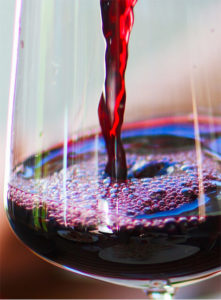 In basic terms, decanting a wine serves 3 purposes: to separate the wine from any sediment that has built up in the bottle, to aerate a wine to let its wonderful aromas explode and be more vibrant, and to look cool in front of other people. Ok, so that last one is debatable. Many times, older red wines and Vintage Ports will naturally produce sediment as they get older. The color pigments and tannins tend to bond together and produce some grainy particles throughout. White wines very rarely will have this happen.
In basic terms, decanting a wine serves 3 purposes: to separate the wine from any sediment that has built up in the bottle, to aerate a wine to let its wonderful aromas explode and be more vibrant, and to look cool in front of other people. Ok, so that last one is debatable. Many times, older red wines and Vintage Ports will naturally produce sediment as they get older. The color pigments and tannins tend to bond together and produce some grainy particles throughout. White wines very rarely will have this happen.
Why can’t I just gracefully take a spoon or chopsticks and stir the wine you ask? Well, that just clouds the wine and can just make it taste gritty. So, yeah, don’t do that. Plus, that totally takes away from the “looking cool” part.
So How Do I Do This Decanting Thing?
Decanting is a simple process. Basically, you are just separating the sediments from the actual clear wine. If a red wine, for example, is 5 to 10 years old, it’s safe to assume you need to decant it, even if you can’t visually see the built up sediments. Before you try to do this yourself by pouring a nice bottle into a sock and shaking it profusely, read this basic yet detailed list of how to do it. It’s not as difficult as you might think:
1. When you bring the bottle home, or grab it from the cellar, or the bookcase, or the bathroom (in case you are a college student reading this and trying to appear more sophisticated at your next keg party), place it upright for 24 hours. This will push the sediments to the bottom of the bottle, making it easier to separate.
2. Find your decanter. Or any clean and clear apparatus that you can easily use to pour the wine into glasses from. If you have one of those glass margarita boots at the house that you won in a wet tee shirt contest in Cancun, that’s fine. Just clean it first.
3. Remove the cork and capsule (all the foil stuff) and wipe the neck of the bottle down. The neck needs to be naked.
4. Hold a light under the neck of the bottle. You can use a candle or a flashlight, either works well. Flamethrowers or car headlights will probably be too much. Keep it basic.
5. Pour the wine slowly into the decanter or whatever clear glass apparatus you have chosen without stopping. When you get to the bottom half of the bottle, go even slower. If you are using the wet tee shirt glass boot bottle, then wait until you get to the foot part. I honestly never thought I’d type that sentence in my lifetime.
6. Once you see the sediment creep up to the neck of the bottle, stop! It might not be as big or obvious as you might think, so keep it slow and concentrate. If the color of the wine becomes cloudy or dusty, that means it is time to stop. Just discard this last ounce or two.
7. It’s time to pour it into glasses and serve!
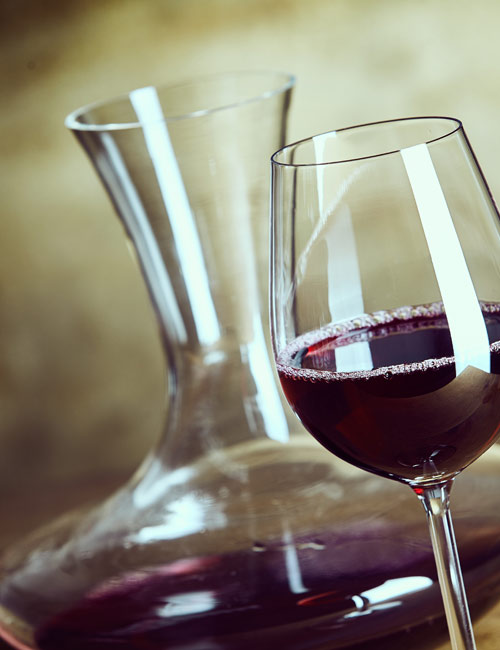
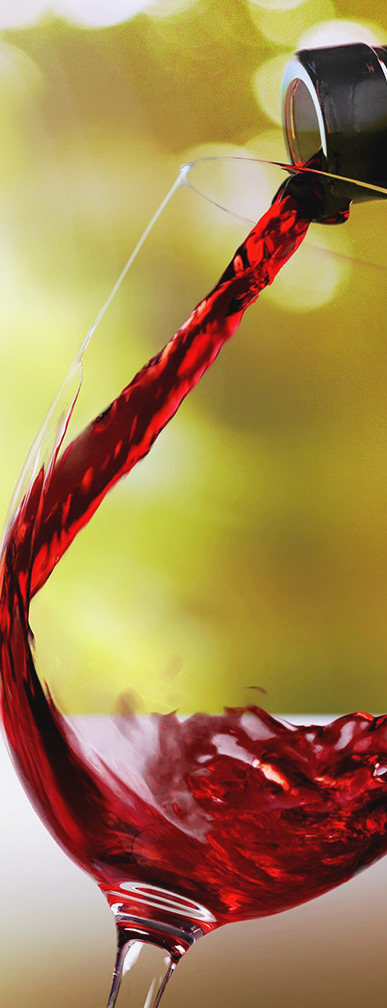
Do I Do This Process Every Time I Drink Wine?
No. Ok, next chapter.
Oh, I probably need to elaborate here, huh? So this is where it gets a bit tricky. There are a lot of factors that can lead up to you making that important decision between just opening the bottle and drinking or decanting. No, “I’ve had 16 beers and this bottle of wine is all that I can find” is not a reason to just skip the decanting process and chug it through a funnel. Actually, we are just going to skip that scenario all together. You probably aren’t reading this if you are in that situation anyways.
There is much debate between wine professionals worldwide on when to decant and if so for how long. Some feel that the extra boost of oxygen from decanting can make a wine “pop” and let all of its wonderful aromas flow. For example, if you open a bottle of wine and at first taste it seems that it is just “blah”, then it might be a good idea to decant it and get those juices flowing so to speak. Other professionals feel, however, that decanting a wine can make it fade at a much quicker pace, and that the oxygen that the wine gets exposed to while sitting in your glass is all it needs.
It’s also important to look at the age of the wine. If it is a fragile red wine that is 15 years or older, be cautious. It should only be decanted 30 minutes or so before drinking. If it’s a younger wine with a lot of bite to it, you could give it up to an hour. Anything over that is just an experiment that can either turn out great or be hugely disappointing. This actually happens, contrary to popular belief, at many wine tastings.
So, What Do You Do?
Well, like I always say, have some fun with it and learn in the process. If it is a wine that you drink often and enjoy, go buy 3 or 4 bottles next time. The first bottle, just open and pour into the glass. The second bottle, decant for 30 minutes. The third bottle, try decanting for an hour. The 4th bottle? Pour it into the bathtub and bath in it. Take notes from all of them. Write down the different aromas, tastes, and feel of each bottle. If it tickles your fancy, wear a white scientist jacket and goggles while doing it.
You will soon figure out what tastes better to you. There is not a right or wrong here. Of course, the experts around the world will give you their opinion of when to decant and how long to do it. But remember, it’s “your” palate that matters. Do what feels best to you. Experiment. Explore. Try it different ways.
If you go to a great wine store that has a staff that seems knowledgeable, and you are buying a higher end bottle, then yes….ask them their opinion. More than likely they can tell you from experience and from what other customers have told them about how they most enjoyed that particular wine. Even then, though, you might find a different method that makes the wine more enjoyable to you. Who knows, that wet tee shirt wine boot from Cancun could be the difference maker! (I wouldn’t suggest telling them that.)
Whatever you try, just remember. Have fun. Enjoy it. Every sip. Every bottle.
Sign Up to be a Tasting Partner!
Enter your email below and you will be the first to know about new wines, recipes, wine articles, and new additions to the Vastewine app.


